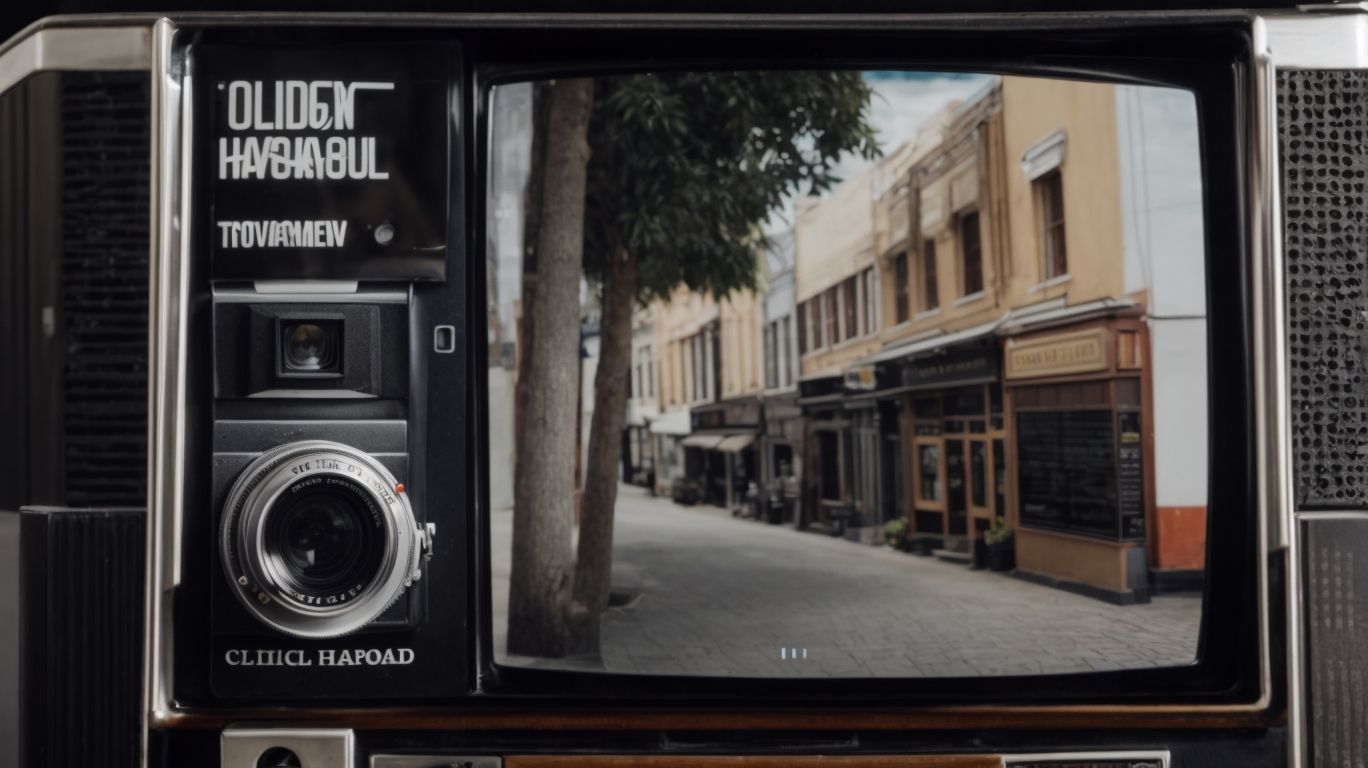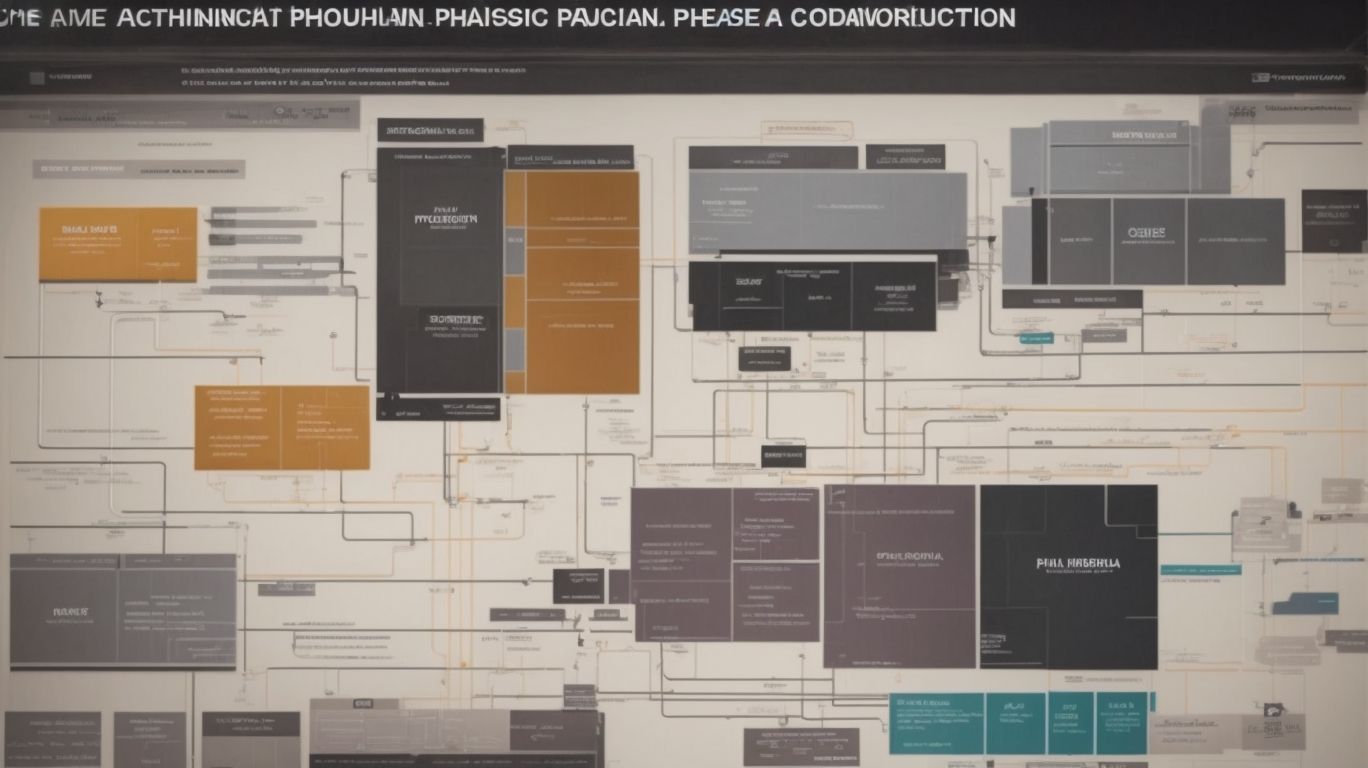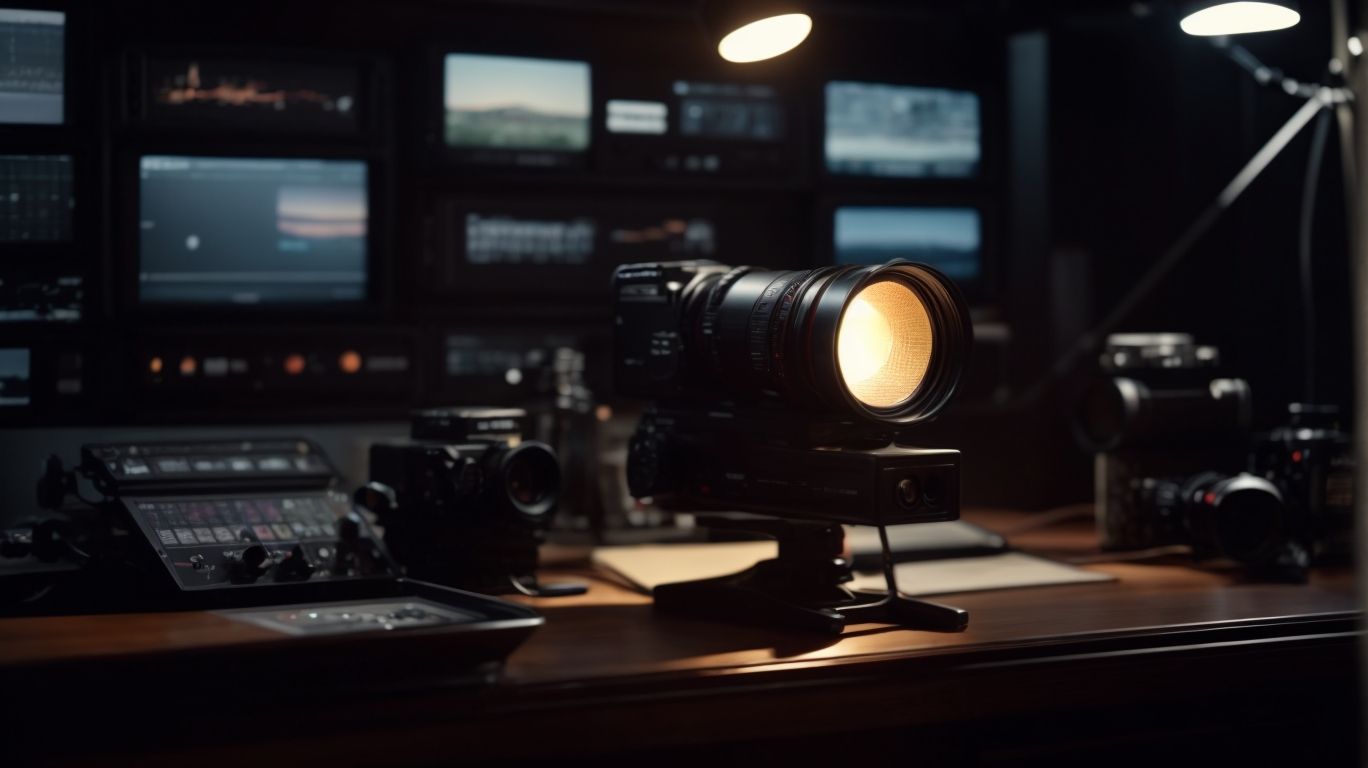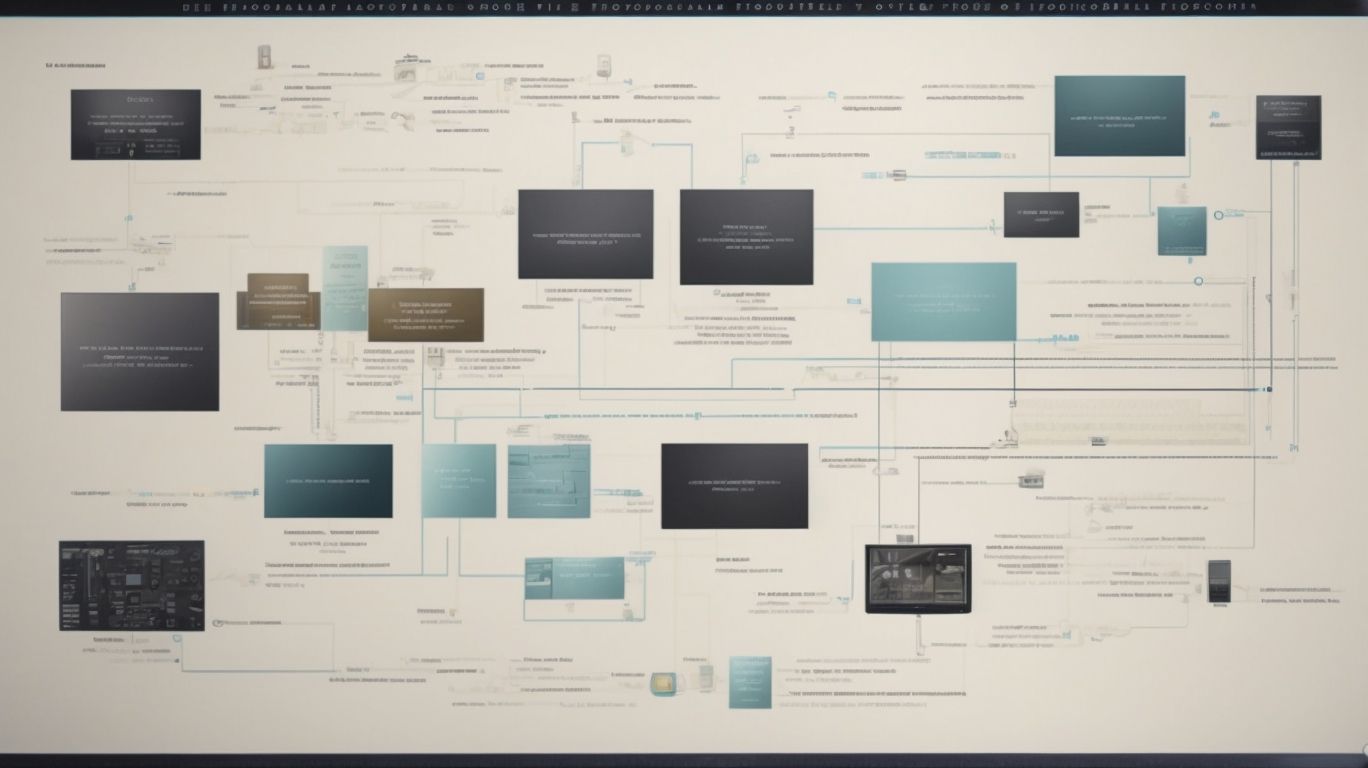TV Commercial Production Process: The Ultimate Guide
Looking to create a captivating TV commercial? Look no further!
In this comprehensive guide, we will take you through the entire TV commercial production process step by step.
From understanding what a TV commercial is to the importance of a well-executed ad, we will cover it all.
Get ready to dive into the pre-production phase, learn about the essential equipment needed for filming, and discover the ins and outs of the production and post-production phases.
Let’s get started!
Key Takeaways:
- Understanding the TV commercial production process is crucial for creating a successful and impactful advertisement.
- Pre-production is a vital stage in the process, involving initial steps, concept creation, and securing permits and locations.
- The production phase brings the concept to life with the right equipment and a skilled production team, while post-production adds the finishing touches for a polished TV commercial.
Introduction to TV Commercial Production

TV commercial production is a vital aspect of advertising and marketing, encompassing the creative process of bringing a brand’s message to life on screen. From concept development to final execution, the production of TV commercials plays a crucial role in engaging audiences and promoting products or services.
It involves a meticulous process that begins with brainstorming innovative ideas that resonate with the target demographic, followed by scriptwriting, casting, location scouting, filming, and post-production editing. Each stage requires collaboration among creatives, production teams, directors, and marketers to ensure that the commercial effectively communicates the brand’s values and captures the audience’s attention.
Their impact goes beyond just conveying a message; TV commercials have the power to evoke emotions, build brand recognition, and influence consumer behavior. By leveraging storytelling, visuals, music, and strategic placement, brands can create memorable and persuasive commercials that drive sales and enhance brand loyalty.
What is a TV Commercial?
A TV commercial is a short video advertisement that is broadcasted on television or in cinemas, aiming to capture the audience’s attention and promote a specific brand, product, or service. Through compelling storytelling and engaging visuals, TV commercials create brand awareness and drive consumer interest in the advertised offerings.
Visual appeal plays a crucial role in making TV commercials effective, as vibrant colors, catchy music, and captivating imagery are utilized to leave a lasting impression on viewers. The art of storytelling within these commercials helps establish an emotional connection with the audience, making the brand message more memorable. By leveraging various techniques such as humor, drama, or suspense, advertisers can evoke specific emotions that resonate with consumers and reinforce brand identity. This interactive experience enhances audience engagement and encourages brand loyalty, ultimately influencing purchasing decisions.
Understanding the TV Commercial Production Process
Understanding the TV commercial production process is essential for creating effective advertising campaigns that resonate with the target audience. From concept development to post-production, each stage in the production process contributes to the overall success of the TV commercial.
Initially, the concept development phase involves brainstorming creative ideas that can capture the essence of the brand and message in a visually compelling manner. This stage sets the direction for the whole production, guiding decisions on scriptwriting, casting, and location scouting.
Once the concept is finalized, pre-production activities kick in, including budget planning, scheduling, and assembling the necessary crew and equipment for the shoot. During the production phase, attention to detail is crucial, ensuring that every shot aligns with the creative vision. Post-production then refines the raw footage through editing, color correction, sound design, and visual effects, transforming it into a polished TV commercial ready for broadcast.
Overview of TV Commercial Production
An overview of TV commercial production involves three main phases: pre-production, production, and post-production. During pre-production, the groundwork is laid out, including scriptwriting, casting, and location scouting. Production involves the actual filming process with the equipment and crew, while post-production focuses on editing and finalizing the commercial.
In pre-production, storyboarding plays a crucial role in visualizing the sequences and shots. It helps in planning the visual aspect of the commercial before filming begins. Tasks such as set design and costume selection are finalized during this stage to ensure a cohesive visual presentation.
As for the production phase, the director of photography supervises the camera and lighting crews to capture the scenes as intended. The production crew works together with the actors and directors to bring the script to life, utilizing equipment like cameras, lighting rigs, and sound recording devices.
Transitioning to post-production, the editor works meticulously to piece together the footage, adding visual effects, music, and sound effects to enhance the overall impact of the commercial. Color correction and sound mixing are also carried out in this phase to ensure a polished final product.
Importance of a Well-Executed TV Commercial
The importance of a well-executed TV commercial cannot be understated in today’s competitive advertising landscape. A compelling and engaging TV commercial can elevate brand awareness, drive product promotion, and enhance audience engagement, ultimately leading to increased market visibility and customer loyalty.
When a TV commercial is carefully crafted to resonate with the target audience, it has the power to create a lasting impression and build a strong emotional connection with viewers. Through captivating visuals, memorable storytelling, and impactful messaging, a commercial can effectively communicate the brand’s values and unique selling propositions.
TV commercials play a crucial role in shaping the public’s perception of a brand, influencing consumer behavior, and establishing a recognizable brand identity. By leveraging the wide reach and persuasive nature of television advertising, companies can solidify their market position and stay top-of-mind in a crowded advertising landscape.
Pre-Production Phase

Credits: Miracalize.Com – James Roberts
The pre-production phase of TV commercial production is a critical stage where the foundation for the commercial is established. Tasks such as scriptwriting, concept development, and securing locations are essential to ensure a smooth production process.
During scriptwriting, the creative team works on developing the storyline, dialogue, and structure of the commercial. This stage is crucial as it lays the groundwork for the visual and auditory elements that will be later captured on camera.
Location scouting involves finding the perfect settings that align with the script’s requirements, be it a bustling city street, a serene countryside, or a stylish studio. The process of concept ideation allows for brainstorming innovative ideas that will engage the target audience and deliver the intended message effectively.
Initial Steps in Pre-Production
The initial steps in TV commercial pre-production involve outlining the project requirements, assembling the production team, and ensuring adherence to filming regulations and guidelines, especially in locations like Dubai with specific production rules.
Once the project objectives are set, the production team plays a vital role in coordinating various aspects such as casting, script development, and location scouting. Their collective expertise ensures a seamless transition from pre-production to the filming stage. Understanding and complying with the regulatory requirements in Dubai, including permits and permissions, is crucial. These initial steps lay the foundation for a successful TV commercial production that meets both creative expectations and legal standards.
Creating the Concept and Script
Creating the concept and script for a TV commercial is a creative process that involves crafting a compelling narrative and engaging storytelling to deliver the brand’s message effectively. The scriptwriting phase lays the foundation for the visual representation of the commercial.
During the scriptwriting phase, attention to detail is crucial as each word and scene must contribute to the overall coherence of the story being told within the commercial.
Character development, dialogue flow, and plot progression must be carefully considered to ensure that the audience remains captivated throughout the advertisement.
By incorporating visual storytelling techniques such as storyboarding and shot planning, scriptwriters can visualize how the narrative will unfold on screen, enhancing the emotional impact on viewers. This process not only helps in crafting more dynamic scenes but also ensures that each moment is intentional in driving the story forward. For those uncertain about *how to start a screenplay*, visual aids like storyboards can offer a clear roadmap, allowing writers to see the flow and pacing before diving into detailed dialogue or action. Ultimately, this approach can bridge the gap between what’s on the page and what will eventually come to life on screen.
Securing Permits and Locations
Securing permits and locations is a crucial aspect of TV commercial pre-production to ensure a seamless filming process. Location scouting and obtaining necessary permits and equipment rentals are essential steps in creating a successful commercial shoot.
Location scouting involves searching for the perfect spots that align with the commercial’s vision and goals. Scouts analyze various factors, such as lighting, accessibility, and aesthetics, to find the ideal settings.
Once locations are chosen, the next step is permit acquisition. This involves obtaining the required permissions from relevant authorities to film at specific sites. The permit process can vary depending on the location and may involve filling out paperwork, paying fees, and adhering to regulations.
Coordinating equipment rentals is crucial to ensure the availability of cameras, lighting, and other necessary gear for the shoot. Securing suitable locations, obtaining permits, and arranging equipment rentals are intricate tasks that demand meticulous planning and coordination.
Equipment Needed for TV Commercial Production

Credits: Miracalize.Com – Russell Gonzalez
Having the right equipment is crucial for TV commercial production to achieve high-quality visuals and audio. Essential gear such as cameras, lighting equipment, sound recording devices, and editing tools play a significant role in creating impactful commercials.
Regarding cameras, high-quality digital cameras with adjustable lenses and high-resolution capabilities are typically used for capturing crisp and detailed shots. Lighting equipment, including softboxes, LED panels, and reflectors, helps create the desired ambiance and mood for the commercial. Sound engineers are crucial in ensuring clear audio by using professional microphones, recorders, and mixers to capture dialogue, music, and sound effects effectively.
Editing tools like video editing software are critical for piecing together footage, adding effects, and refining the final commercial. Cinematographers work closely with directors to frame shots, set the right lighting, and capture visually engaging sequences, while sound engineers focus on capturing high-quality audio to complement the visuals seamlessly.
Essential Equipment for Filming
Essential equipment for filming a TV commercial includes high-quality cameras, professional lighting setups, sound recording devices, and production software like StudioBinder for efficient team collaboration and project management.
Plus these fundamental tools, having the right camera is crucial for capturing high-definition visuals that can engage the audience effectively. A camera with adjustable settings for aperture, shutter speed, and ISO allows the filmmaker to control the depth of field, motion blur, and exposure levels, providing versatility in creating diverse visual styles.
Regarding lighting techniques, using a combination of key, fill, and backlighting can add depth and dimension to the scenes, enhancing the overall visual impact of the commercial. Strategic placement of lights, such as softboxes, reflectors, and filters, helps achieve the desired mood and ambiance in different shots.
Utilizing production management tools like StudioBinder streamlines the workflow by centralizing communication, scheduling, script breakdowns, storyboarding, and shot lists. This software facilitates seamless collaboration among team members, ensuring that the project progresses smoothly from pre-production to post-production stages, resulting in a cohesive and successful TV commercial.
Ensuring Quality Production with the Right Tools
Ensuring quality production in TV commercials requires the use of the right tools and equipment that can enhance the visual representation of the brand message. From high-definition cameras to advanced editing software, investing in quality tools is essential for a successful production.
One of the key aspects of achieving high-quality visual representation in TV commercials is staying abreast of technological advancements in post-production processes.
Editing software today offers a plethora of features that allow for seamless transitions, stunning visual effects, and precise color grading, all of which contribute significantly to the overall look and feel of the commercial. The integration of CGI (Computer-Generated Imagery) and animation can elevate the storytelling aspects, making the commercial more engaging and memorable for the audience.
Production Phase

Credits: Miracalize.Com – Randy Sanchez
The production phase of TV commercial creation is where the concept comes to life through filming and capturing the planned scenes. It involves the coordination of the production team, led by the director, production assistant, and other key crew members.
Within the production team, the director plays a crucial role in overseeing the creative aspects of filming, ensuring that the vision of the commercial is translated effectively on screen.
The production assistant supports the director by handling administrative tasks, scheduling, and coordination of logistics to keep the production on track.
The key crew members, such as the cinematographer, sound engineer, and lighting technicians are responsible for capturing high-quality visuals and audio that align with the overall concept.
Bringing the Concept to Life
Bringing the concept to life in a TV commercial involves translating the script and storyboard into captivating visuals that convey the brand message effectively. Filming techniques, narrative coherence, and visual storytelling play a key role in capturing the audience’s attention.
When transitioning from script to screen, the director and cinematographer work hand in hand to choose the right angles, lighting, and camera movements that enhance the storytelling. Visual storytelling is not just about what is seen but also the emotions it evokes, creating connections with the audience on a deeper level. By orchestrating these elements, the commercial transforms from a concept on paper into a vibrant, engaging visual narrative that resonates with viewers. Crafted with precision and creativity, each frame contributes to the overall impact of the story, infusing it with dynamism and allure.
Roles and Responsibilities of the Production Team
The production team for a TV commercial consists of various key roles, including the director who oversees the creative vision, the art director responsible for visual aesthetics, the editor who refines the final cut, and other crew members who support the production process.
The director takes charge of translating the script into visual storytelling, guiding the actors and crew to bring the narrative to life.
Working closely with the director, the art director focuses on designing sets, props, and overall visual style to ensure the commercial aligns with the desired brand image.
Meanwhile, the editor plays a crucial role in piecing together footage, selecting the best takes, and fine-tuning transitions and pacing to create a compelling story in a concise format.
Execution of the TV Commercial Shoot
The execution of a TV commercial shoot involves following the shooting schedule meticulously, coordinating with the production team using a call sheet, and ensuring that the filming locations are optimized for capturing the desired scenes effectively.
Effective time management is crucial during a TV commercial shoot as there are multiple elements that need to come together seamlessly. Communication among the crew members plays a vital role in ensuring that everyone is on the same page and tasks are executed efficiently.
Production schedules serve as the backbone of the shoot, outlining each step of the filming process and deadlines for various aspects of production. These schedules help in keeping every team member informed about the timelines and responsibilities.
Scouting and securing suitable filming locations is a significant aspect of the pre-production phase. Ensuring that the locations are conducive to filming the intended scenes and that logistics such as permits and accessibility are in place is essential for a smooth shoot.
Post-Production Phase
The post-production phase of TV commercial creation involves editing the footage, adding special effects, and enhancing the audio elements to create a polished final commercial. The expertise of editors, sound engineers, and visual effects artists is crucial in this phase.
Editors meticulously sift through the raw footage, selecting the best shots and assembling them to tell a cohesive story. They fine-tune transitions, color grading, and pacing to maintain audience engagement. Sound engineers enhance the audio by adjusting levels, adding music, and ensuring clear dialogue. Meanwhile, visual effects artists bring creativity to life by integrating CGI, animations, and graphic overlays.
The collaboration between these professionals culminates in a visually captivating and sonically pleasing TV commercial that aligns with the client’s vision and resonates with the target audience.
Editing and Special Effects
Editing and special effects are integral aspects of post-production in TV commercial creation, where the raw footage is refined, transitions are smoothed, and visual enhancements like graphics or animations are added to elevate the commercial’s visual appeal.
Editors play a crucial role in this process, meticulously going through hours of footage to select the best takes and arrange them cohesively to convey the intended message. They also focus on color correction and audio adjustments to ensure a polished final product.
The inclusion of visual effects can transform a mundane commercial into a visually captivating masterpiece. Techniques such as green screen compositing, CGI, and motion graphics can bring imagination to life on screen, making the commercial engaging and memorable for viewers.
Adding Sound and Music
In the post-production phase, adding sound and music to a TV commercial is crucial to enhance the viewer’s experience and evoke the desired emotions. Sound engineers work on perfecting the audio elements, including music selection and sound effects.
Sound design plays a fundamental role in creating a seamless auditory backdrop for the visuals in a TV commercial, allowing key messages to resonate with the audience. Through the artful manipulation of audio elements, sound engineers craft aural landscapes that complement the narrative, engage viewers, and leave a lasting impression.
Each sound, whether it’s a subtle background noise or a dramatic musical score, is meticulously selected and mixed to evoke specific emotions and enhance the overall impact of the commercial. The synergy between visual content and audio components heightens the storytelling experience and captivates the audience’s attention.
Finalizing the TV Commercial
Finalizing the TV commercial involves reviewing the edited footage, ensuring visual coherence and brand alignment, and making any necessary adjustments to deliver a polished commercial that effectively communicates the brand message and promotes the product or service.
After the editing phase, the commercial is typically screened multiple times to identify areas that may require enhancement. It is crucial to maintain brand consistency throughout the ad, ensuring that the logo, color scheme, and overall tone remain in line with the company’s identity.
Once all visual elements are confirmed to be in harmony, the focus shifts towards the message delivery. The script, voiceover, and music selection play significant roles in conveying the desired emotions and information to the target audience.
Frequently Asked Questions
What is the TV Commercial Production Process?
The TV Commercial Production Process refers to the step-by-step procedure of creating a television commercial from concept development to final delivery.
Why is it important to have a guide for TV Commercial Production?
Having a guide for TV Commercial Production ensures that the process is organized and efficient, resulting in a high-quality commercial that effectively communicates the desired message.
What are the key stages in the TV Commercial Production Process?
The key stages in the TV Commercial Production Process include concept development, pre-production, production, post-production, and final delivery.
Who is involved in the TV Commercial Production Process?
The TV Commercial Production Process involves a team of professionals, including writers, directors, producers, actors, editors, and post-production specialists.
How long does the TV Commercial Production Process typically take?
The duration of the TV Commercial Production Process can vary depending on factors such as the complexity of the commercial, the budget, and the timeline. On average, the process can take anywhere from 6-8 weeks.
What are some tips for a successful TV Commercial Production Process?
Some tips for a successful TV Commercial Production Process include having a clear and concise concept, hiring experienced professionals, creating a detailed schedule, and staying within budget.
